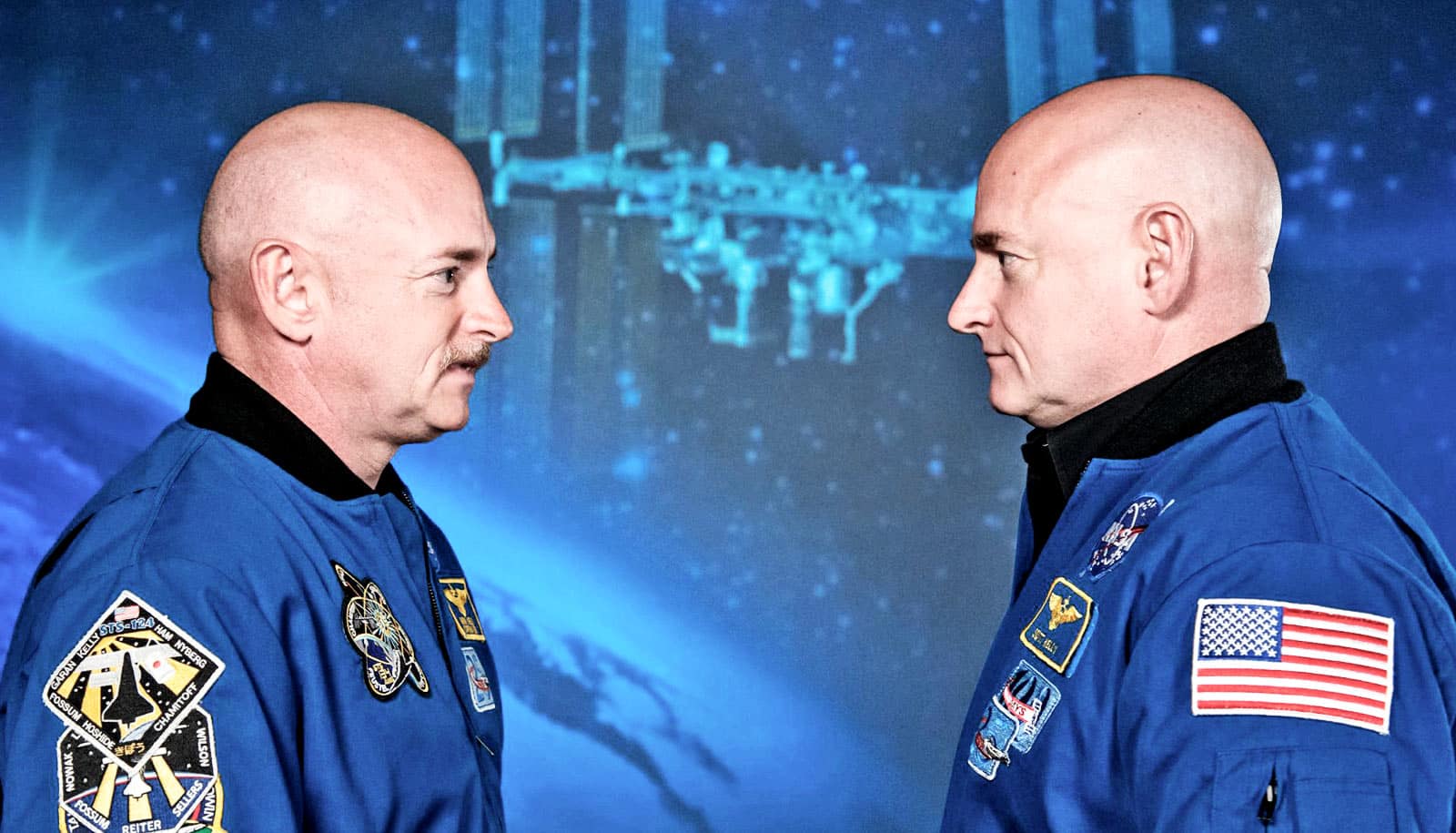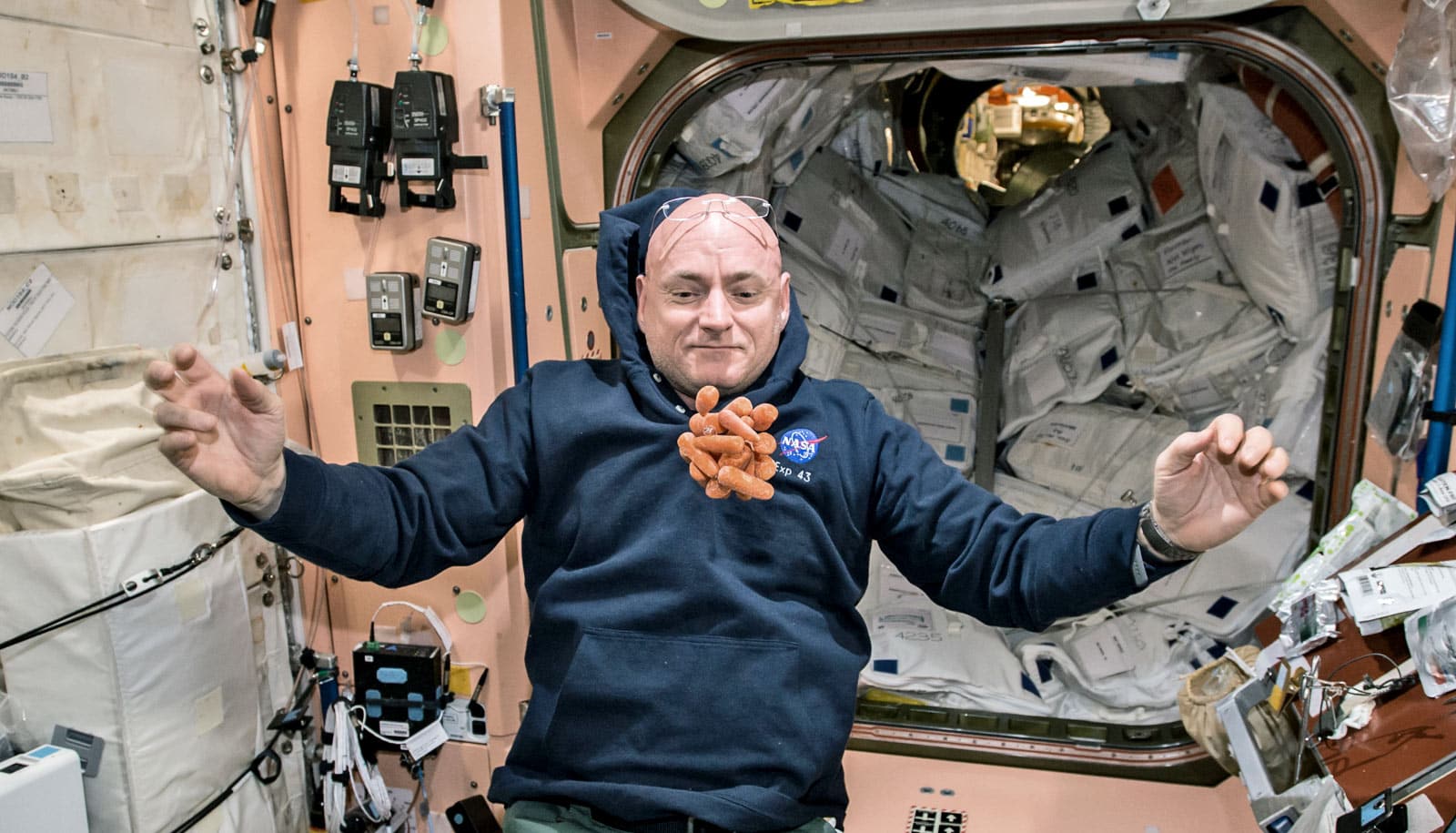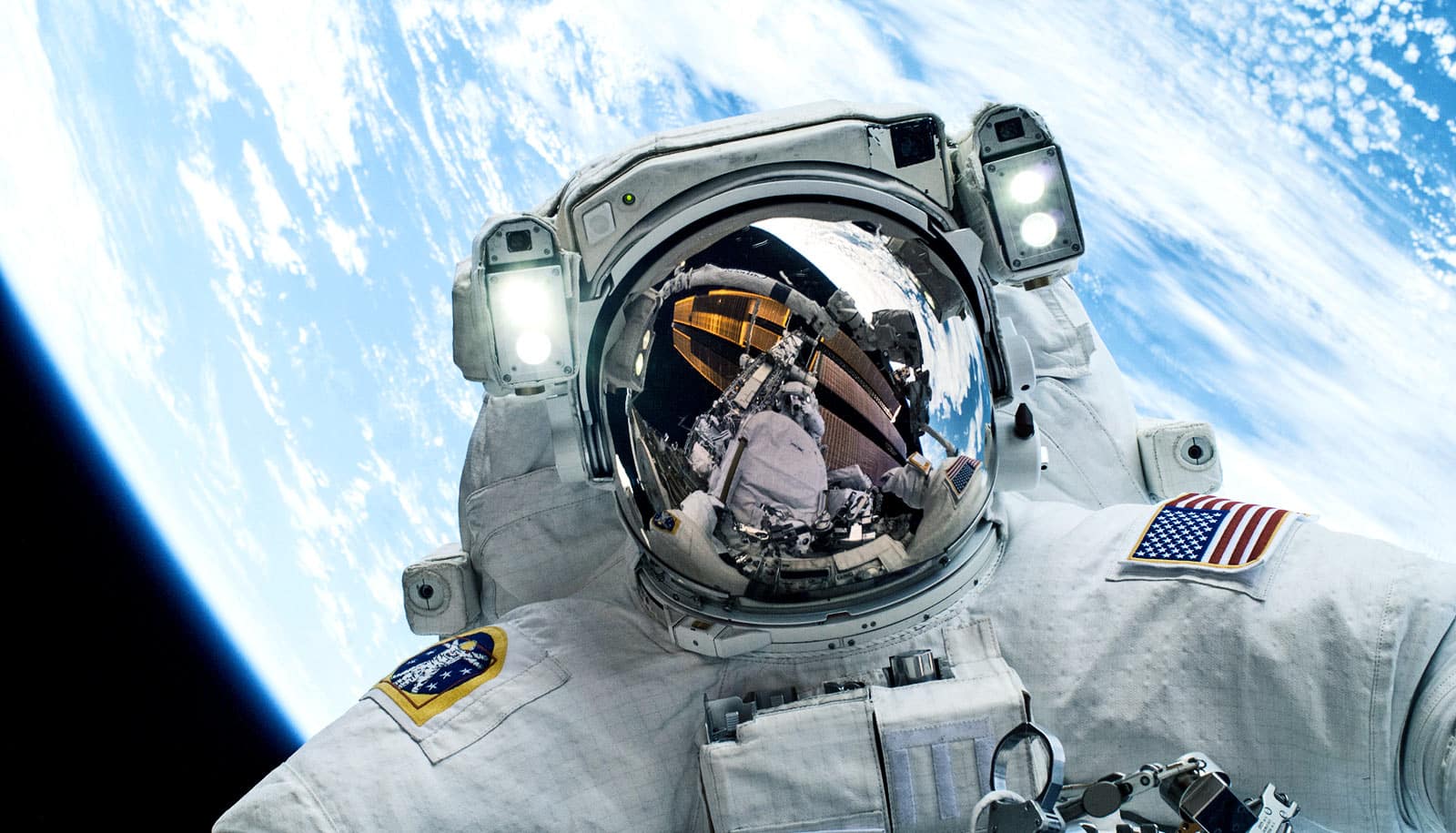Mitochondria, the body’s “cellular powerhouse” are remarkably resilient to the stress of space, according to the NASA Twins Study.
From March 2014 to March 2015, astronaut Scott Kelly spent 340 days on the International Space Station while his identical twin, former astronaut Mark Kelly, remained on Earth as part of a NASA and Russian Federal Space Agency study on the health effects of long-term space flight.
“In short, mitochondria are resilient to the blood-borne signals of space stress.”
Jamila Siamwala, an assistant professor (research) in Brown University’s molecular pharmacology, physiology and biotechnology department, led a small part of the massive, integrated Twins Study when she was a postdoctoral fellow at University of California, San Diego.
Siamwala, who is also affiliated with the Vascular Research Laboratory at Providence Veterans Affairs Medical Center, studied mitochondrial physiology, or how the “cellular powerhouse,” which produces the vast majority of chemical energy used by cells, functioned and responded to chemical signals of stress present in blood samples from the twins.
Her findings, which appear in Science, show that the chemical markers of microgravity stress did not affect mitochondrial function in muscle cells, though non-mitochondrial respiration was somewhat reduced in Scott, the space twin, compared to Mark Kelly.
Here, she shares insights on the study and her work.
What is the NASA Twins Study and what were its goals?
NASA’s key mission is space exploration. But before we can move beyond Earth and explore other planets, and possibly inhabit them in the near future, we need to know if our bodies can adapt to the stresses of microgravity or if long exposures are too harmful.
Until this study, NASA astronauts have stayed on the International Space Station for a maximum of six months, but traveling to Mars would take a year with another year to come back using the rockets and equipment we currently have.
This Twins Study started to see what the long-term impact of space conditions would have on the human body. Since the twins are genetically identical, any differences we see over the year in space is due to microgravity itself, not some other confounding variable.
Before, during and after the year in space, NASA collected many different samples from both twins: urine, stool, blood, even spit. This was an integrated study looking at how space conditions impact all of the layers of biology: epigenetics, telomeres, transcriptomics, metabolomics, proteomics, the whole physiology of a human, everything you could imagine that can be done with the twins’ samples.
It involved a massive collaboration among 12 institutes and 84 people, each with unique area of expertise. It is critical to study things as a whole, not in isolation. Research doesn’t make sense until you have the whole picture.
What was your role in the study? Why are mitochondria important?
My role was to look at the mitochondrial physiology because I’m a cell physiologist by training, with a specialization in vascular biology. Since my PhD, I’ve been studying space effects on blood vessels, and I joined Alan Hargens’ lab University of California, San Diego as postdoctoral fellow.
He studies the effect of microgravity on the eye and cardiovascular system. Hargens collaborated with Brinda Rana, a twins study expert at UCSD, for this project. Brinda Rana and Hemal Patel, an expert in mitochondrial physiology at UCSD, were my primary mentors for the twins study.
Mitochondria produce the vast majority of chemical energy used by our cells. In addition to energy production, mitochondria are really important for oxidative stress, apoptosis—controlled cell death—and aging. So understanding mitochondrial physiology is key for understanding how the skeletal muscle adapts to long-term microgravity. Muscle loss is a long-standing problem due to microgravity, which was the main reason why we looked at skeletal muscle cells specifically.
What did you find?
Blood contains numerous signals of pathological stress, such as exosomes, cytokines, proteins, and metabolites released by cells and tissues into the bloodstream. These chemicals serve as alarm signals to tell cells in remote parts of the body that there is, for example, an injury. Our hypothesis was that these alarm signals would affect the mitochondrial respiration and the energy consumption of the skeletal muscle cells and thus the function of the muscles.
We found that Mark and Scott had very similar mitochondrial function pre-flight, but surprisingly, during the flight there was practically no change between them. For Scott, the space twin, we saw a tiny increase in basal respiration and a small reduction in non-mitochondrial respiration. In short, mitochondria are resilient to the blood-borne signals of space stress.
What are the implications of your research and the greater paper?
Our results suggest mitochondrial function is not affected by a year of space travel. We still don’t know why the mitochondria are resilient to the oxidative stress and inflammation of microgravity.
For the larger study, we found microgravity changed other parameters—epigenetic function, transcriptome, metabolome, physiology—but most returned to normal within six months of Scott returning to Earth. All of the investigators found that the human body is amazingly resilient to space conditions. We don’t know exactly why, but genetics, the astronauts’ intense fitness routines, and controlled diet all could play a role.
How does this relate to your current research at Brown?
Right now, my main focus is the role of cytokines—the same kind of chemical alarm signals we looked at in the NASA study—in right ventricular fibrosis.
In some patients, high blood pressure, especially in the lungs, leads to scar formation in the right ventricle and eventually heart failure. In any other part of the body it is expected that fibroblasts will form a scar in response to injury. However, if this happens in the heart, the wall thickens and the heart loses its ability to contract, resulting in right ventricular dysfunction and heart failure.
Last year, I joined the group of Dr. Gaurav Choudhary, an associate professor of medicine at Brown and associate chief of staff (research) at the Providence VA Medical Center, and my role was to identify how acetylcholine and nicotine, primarily associated with the brain, affect uncontrolled fibroblast cell division in the right ventricle, leading to right ventricular fibrosis.
Our recent findings about role of inflammation in this project prompted me to further explore the role of cytokines and chemokines in right ventricular fibrosis. This work is supported by a pilot project from the CardioPulmonary Vascular Biology Center for Biomedical Research Excellence (COBRE) under the mentorship of Choudhary and Dr. Alan Morrison, an assistant professor of medicine at Brown.
Source: Brown University



